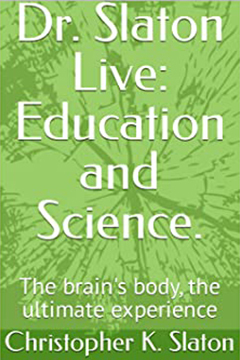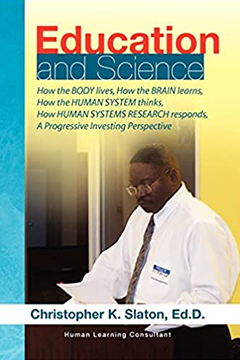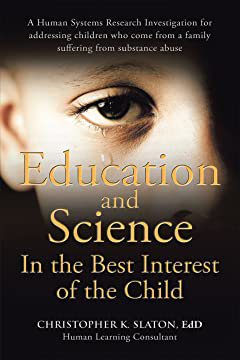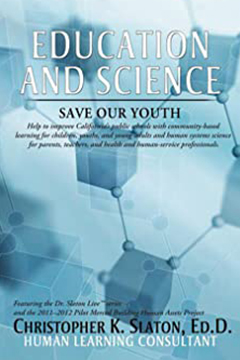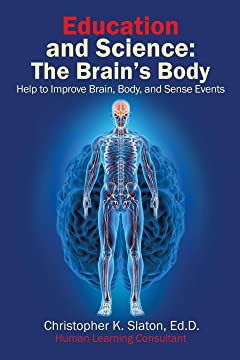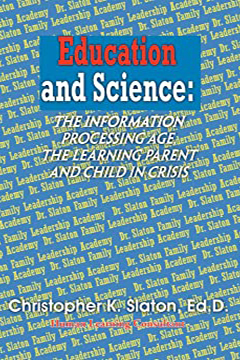Christopher K. Slaton, Ed.D.
Welcome to the Brain’s Body Learning System
Improve performance: Learn how to Master Brain, Body, and Sense Events. Our Learning plans advance social and neural functioning through a focus on sense and receive path interplay. This helps to improve your understanding of how energy, action, and feelings transform the flow of information, experience, knowledge, and comprehension: when you choose to live through feelings of contact; learn through feelings of interaction; think through feelings of cooperation; and respond through feelings of participation.
The Brain’s Body Learning System is designed to improve the sense and receive path functions of students, parents, teachers, coaches, and counselors as learners and performers of Brain Talk. Brain Talk: A Human Systems Science Structured Language Learning System through the applied use of social and academic learning as the neural and social science of the brain’s body and the neuro physics of self. Brain’s Body Learning Systems, the study of (negative or positive) energy, action, and feelings; sense and receive path functions; emotion, thought, reflection; forward and backward feed; and contact, interaction, cooperation, participation, and performance. Please schedule a free consultation today.
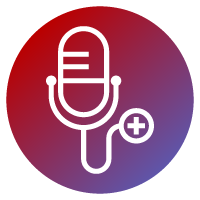
Brain's Body Podcast
Improve a Parent, Youth, or Young Adults Sense and Receive Path Functions
Listen to this PodcastShow Notes

Brain's Body Podcast
Improve a Child's Sense and Receive Path Functions
Listen to this PodcastShow Notes

Brain's Body Podcast
Healing. Feeling, Caring. The Brain's Body Learning Systems
Listen to this PodcastShow Notes
Books by Dr. Christopher K. Slaton
We offer free shipping to everywhere in the US.
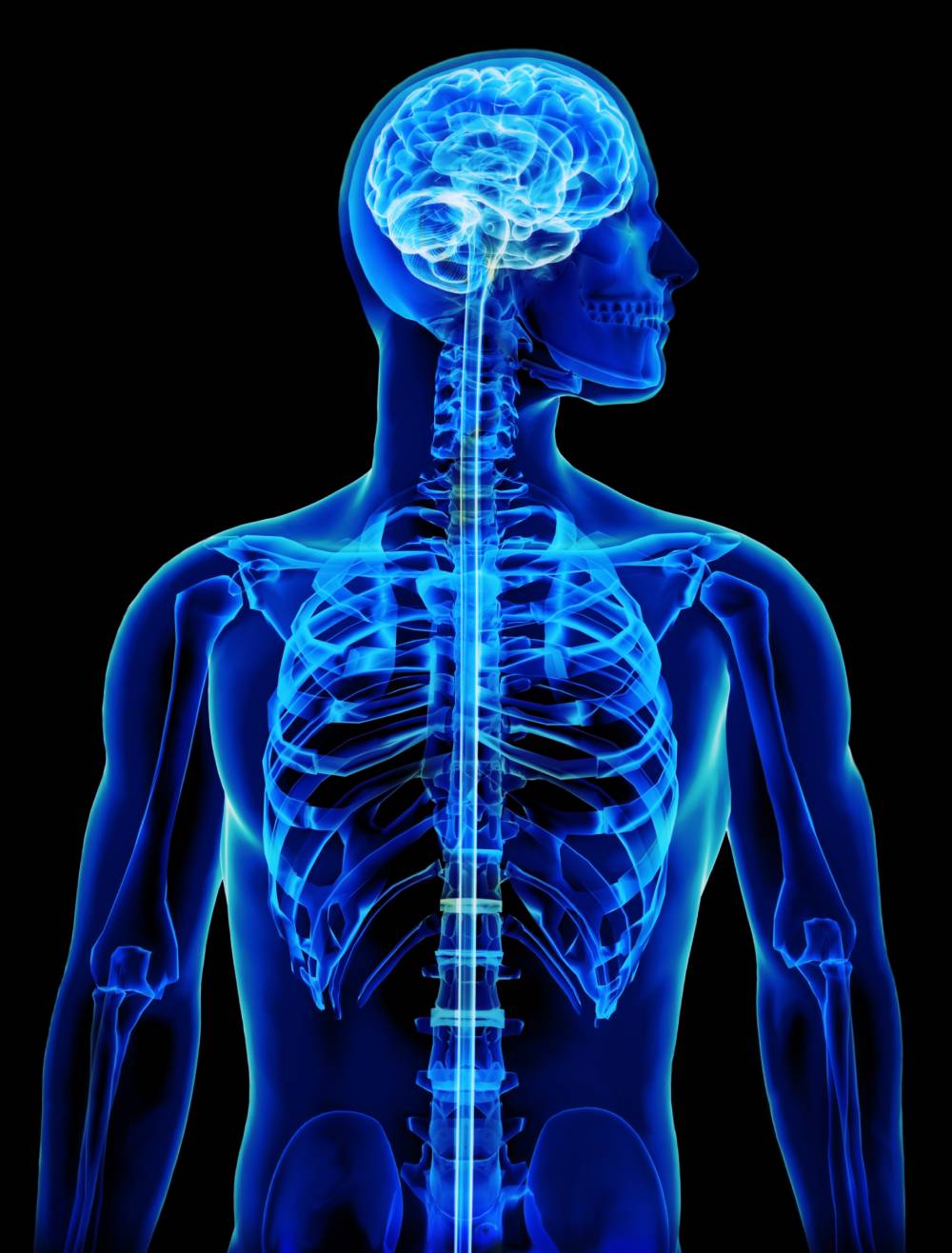
How It Works
The Brain’s Body Learning System uses:
- Self-Research to improve sense and receive path functions that have been compromised
- Self-Help to improve the flow of information and knowledge
- Self-Discovery to improve the experience of emotion, thought, reflection; and more!
About Dr. Christopher K Slaton
Dr. Christopher K. Slaton is a Human Systems Scientist with more than thirty years of social and academic knowledge across the applied use of human, cognitive, and behavior science. Through my contributions to education and science literature, I have not only disseminated knowledge but cultivated a bridge between theory and practice, fostering a deeper comprehension of the intricate dynamics governing our cognitive and sensory experiences.
Progressive Investing, the motivation to learn how to live each day to become more informed through the experience of action, and to think through the things you feel.
- The field of human systems science: the study of brain, body, and sense events to help improve sense and receive path performance.
- Human systems research, the study of self, other people, and the environment to help improve the contact and interaction of people in their home, school, neighborhood, and workplace as fields of experience.
- Human Systems Research Investigations, to document the challenges of children who come from a family suffering from substance abuse.
- Feeling Systems Science, the study of how we feel things, and do we feel the things we feel. “Systems feeling is a new science on how the brain, body, and senses feel things” (Slaton 2010).
- Brain’s Body Learning Systems, the study of (negative or positive) energy, action, and feelings; sense and receive path functions; emotion, thought, reflection; forward and backward feed; and contact, interaction, cooperation, participation, and performance.
- Brain Talk, the study of language use through the applied use of social and academic learning as the neural and social science of the brain’s body and the neuro physics of self. The general principles of a sense of feel for self is neuro physics: the synthesis of one’s capacity and ability to observe, listen, learn, help, and lead. Self-Leadership, a sense of feel for self and the brain, in the lead of the body.

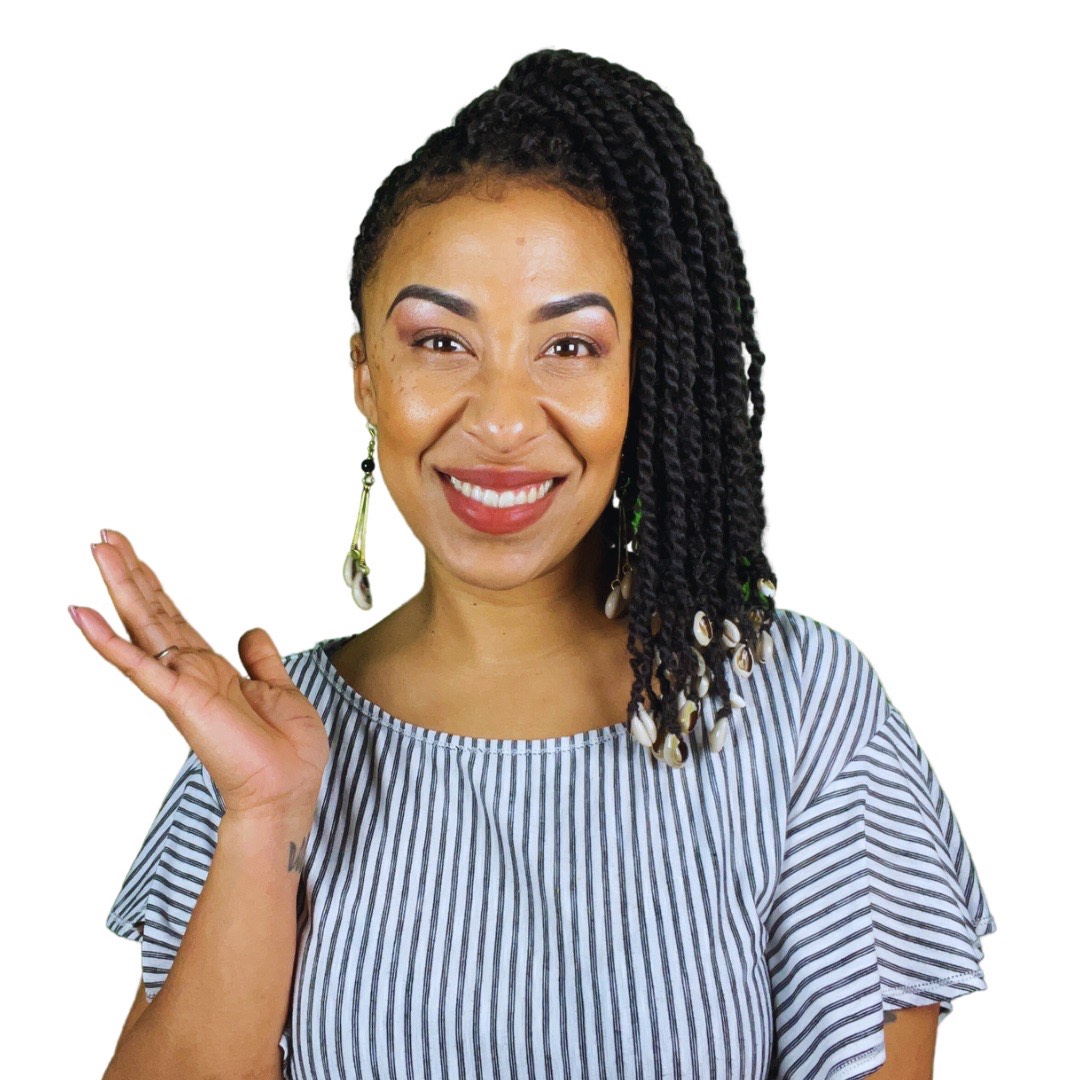
See What Marianna, A Valued Participant, Says About Her Experience
Dr. Slaton Believes...
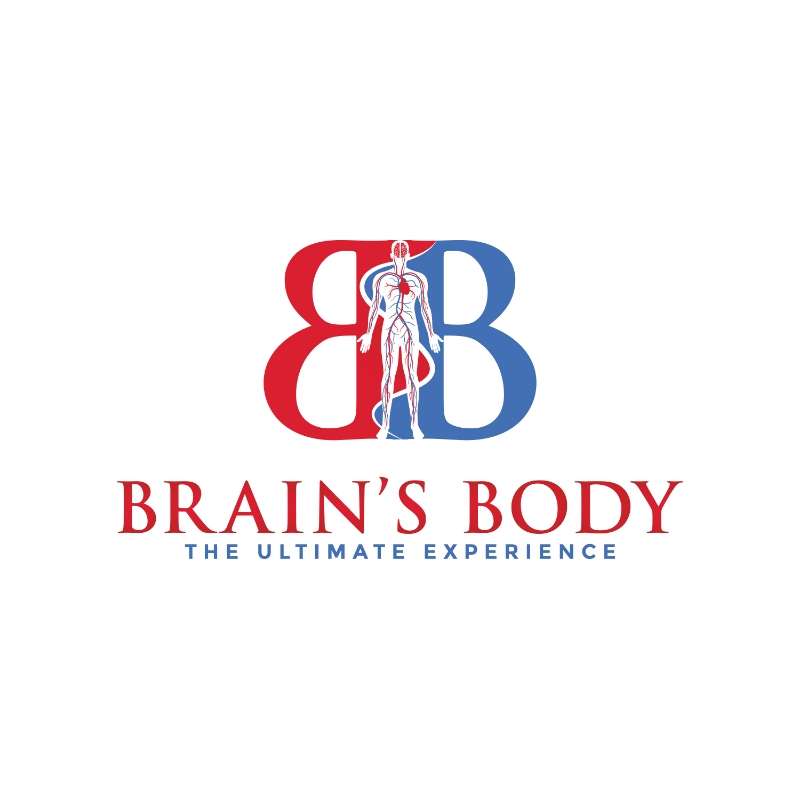
Lorem ipsum dolor sit amet, consectetur adipiscing elit. Ut elit tellus, luctus nec ullamcorper mattis, pulvinar dapibus leo.
